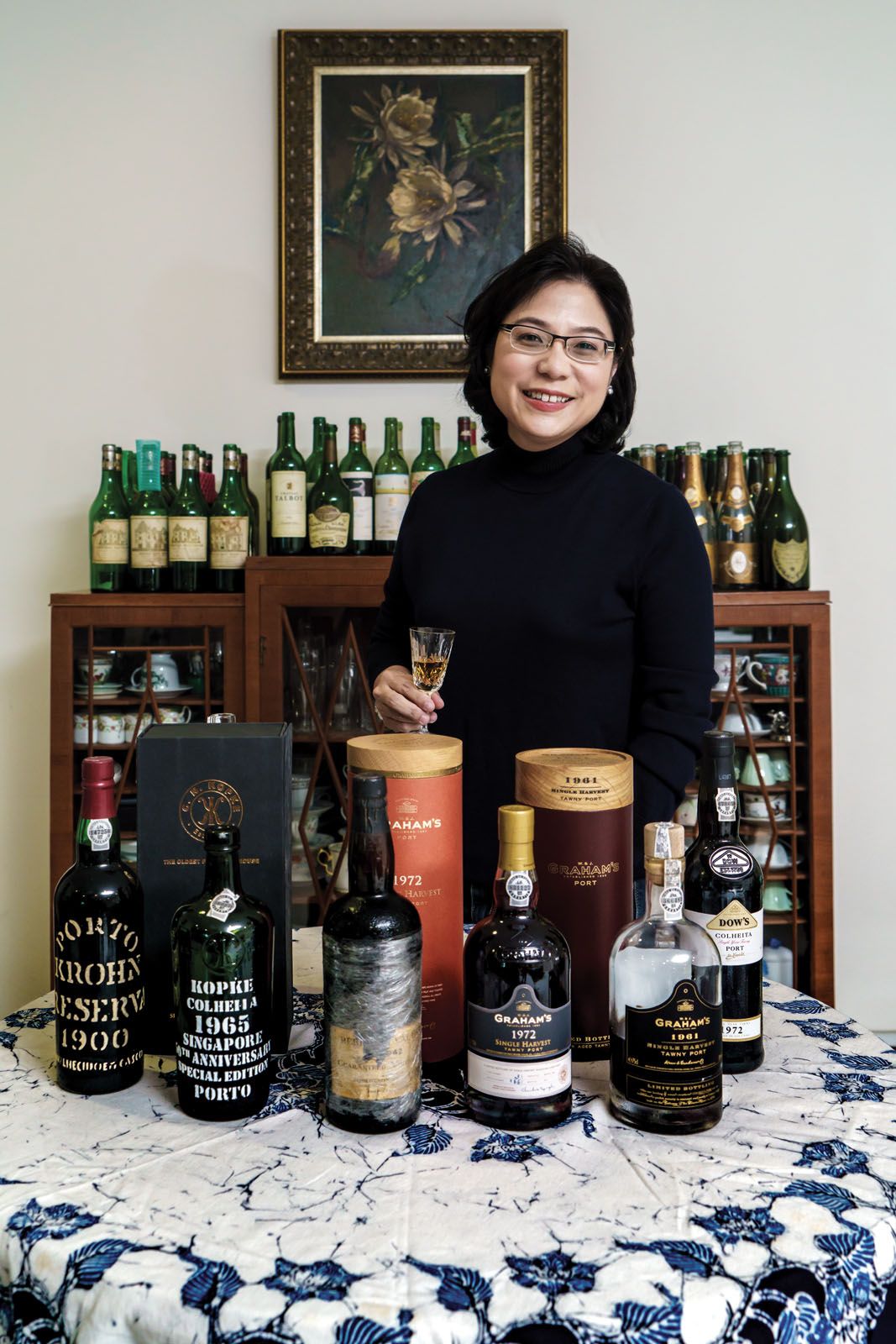Tan Min Li
The vivacious corporate lawyer has a meeting to attend after our photo shoot and interview, but it would seem all the talk about champagne has made Tan Min-Li very thirsty. “I absolutely love champagne, and my first trip to Reims in May was simply a champagne lover’s dream come true,” she says as we look through her neatly organised wine cellar. We’re hunting for some of her favourites: Champagne Vilmart Coeur de Cuvée 2007, a Grower Champagne which she discovered on her trip; Salon 1996, Dom Perignon P2, Dom Ruinart 1996 and Krug Clos du Mesnil 2002. The last is her celebration wine, most recently popped during her birthday weekend.
“I am a social drinker and was drawn to the celebratory nature of champagne—(including) the popping of the cork, which signals the start of a wonderful evening,” she shares. Her journey started about eight years ago after she overcame an alcohol allergy. She and her husband Kevin started building their cellar together, concentrating on (wine from) Burgundy, Bordeaux and Champagne.
She buys locally and from wine merchants in the US and Europe. Frédéric Panaiotis, chef de cave of Ruinart, is also a good friend and advisor. “I met Frédéric at a Ruinart dinner at Les Amis in March this year, and recognising a champagne enthusiast, he invited me to visit Maison Ruinart, which I did when I was in France to attend the Cannes Film Festival. He is fiercely passionate about producing the ultimate blanc de blancs,” recounts Min-Li. To her surprise, Frédéric also cooked her an excellent dinner of wild boar, which his brother caught, and served with a Ruinart 1996.


